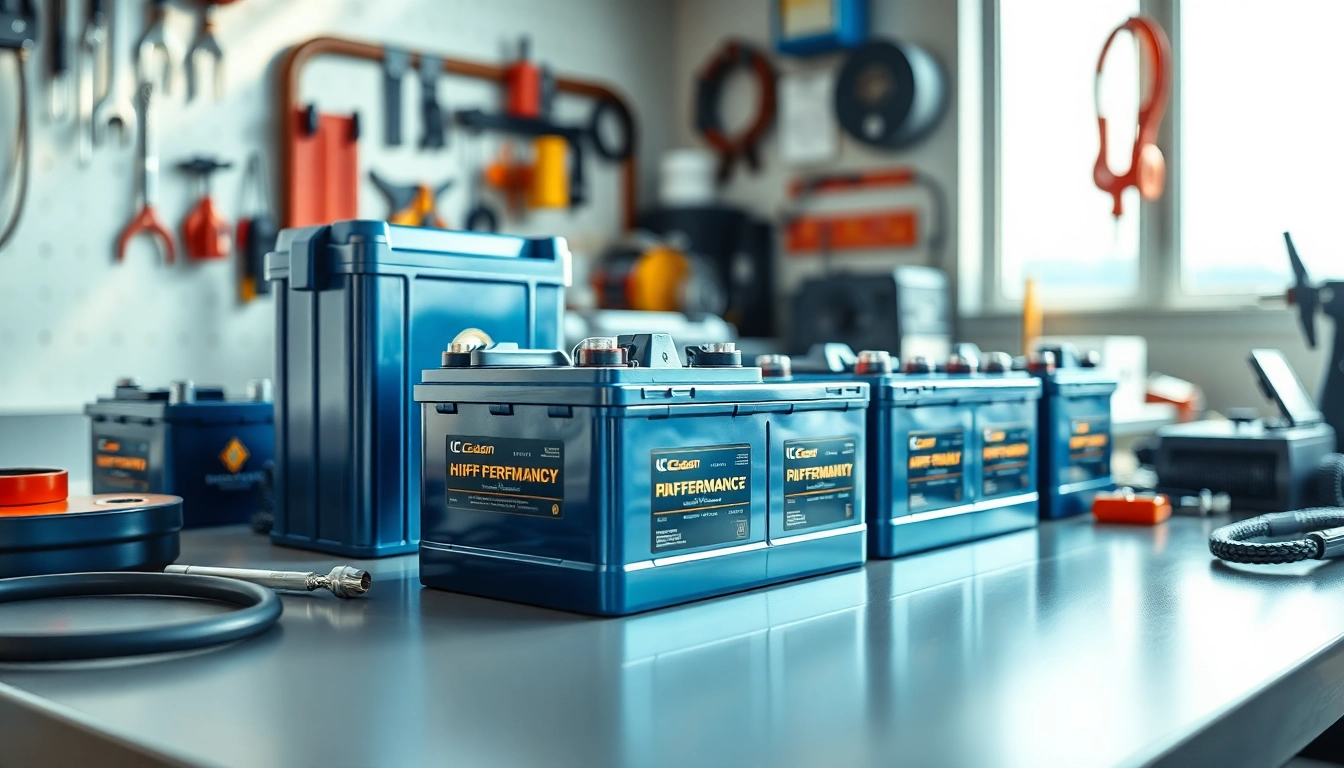Understanding Welding Supplies: Types and Uses
Welding is an essential process in a variety of industries, from construction and manufacturing to automotive repair and artistry. The right welding supplies are crucial for achieving high-quality results. This comprehensive guide aims to break down the essential types of welding supplies, their uses, and the critical role they play in ensuring the efficiency and safety of welding projects.
Common Welding Tools and Their Functions
Welding tools are specialized equipment designed for specific tasks, and knowing each tool’s function can greatly enhance a welder’s effectiveness. Here is a breakdown of some common welding tools:
- Welding Machine: This is the primary tool used for welding operations. Common types include MIG, TIG, and Stick welders, each suitable for different applications.
- Welding Helmet: Protects the welder’s eyes and face from the intense light and heat produced during welding.
- Welding Gloves: Provides thermal protection while offering dexterity for handling welding tasks.
- Chipping Hammer: Used to remove slag from a weld after it has cooled, ensuring a clean finish.
- Wire Brush: Essential for cleaning metal surfaces before and after welding to ensure strong welds.
- Welding Pliers: Multifunctional tools that help in holding and cutting wire, as well as in manipulating hot materials.
The Importance of Protective Gear
The welding environment can be hazardous, making protective gear indispensable. Proper gear not only protects the welder but also upholds safety standards. Key components include:
- Welding Jacket: Made from flame-resistant material, it shields the body from sparks and heat.
- Respirator: Essential for shielding the lungs from harmful fumes and particulates generated during welding.
- Safety Boots: Steel-toed boots guard against falling objects and provide comfort for long hours on-site.
Choosing the Right Welding Materials
Different materials require different welding rods and filler materials. For instance:
- Steel: Commonly welded using mild steel rods.
- Aluminum: Requires specific alloy rods and filler materials to achieve a strong bond.
- Stainless Steel: Can be welded with various rods depending on the specific alloy being used.
Understanding these distinctions is key for any successful welding project.
Your Essential Guide to Welding Helmets
A welding helmet is one of the most crucial pieces of equipment for any welder. It not only protects the face and eyes but also enhances visibility during the welding process. Here’s what you should know:
Features to Consider When Buying
When selecting a welding helmet, consider the following features:
- Auto-Darkening: This feature allows the helmet lens to darken automatically when the welding arc is struck, providing optimal visibility.
- Weight: A lighter helmet reduces neck fatigue during prolonged use.
- View Size: A larger view window offers a better field of vision.
- Comfort: Ensure that the helmet has adequate padding and an adjustable fit.
Top Brands for Welding Helmets
Several trusted brands manufacture high-quality welding helmets. These include:
- Lincoln Electric: Known for innovative designs and effective protection.
- Miller Electric: Renowned for durability and advanced technology.
- ESAB: Offers options for both novice and experienced welders with features tailored to various welding applications.
Maintenance Tips for Longevity
To ensure the longevity of your welding helmet, follow these maintenance tips:
- Regular Cleaning: Use a gentle cloth to clean the lens and filter, avoiding harsh chemicals.
- Proper Storage: Store the helmet in a protective case when not in use to shield it from impacts and dust.
- Inspect Regularly: Check for any signs of wear or damage, replacing parts as necessary.
Comparing Welding Machines: MIG, TIG, and Stick
Selecting the right welding machine can be a daunting task due to the variety of options available. This section compares the three most common types of welding machines:
Benefits of Each Type
Each welding machine has unique benefits that make it suitable for specific tasks:
- MIG (Metal Inert Gas): Ideal for beginners and general-purpose welding. It offers high speed and ease of use, making it perfect for thin materials.
- TIG (Tungsten Inert Gas): Provides clean and precise welds. It is best suited for thin sections and can be used on a variety of metals.
- Stick (Shielded Metal Arc Welding): Versatile and effective for outdoor use, it works well in industrial applications where portability is essential.
Best Practices for Machine Usage
Regardless of machine type, employing best practices enhances safety and effectiveness:
- Practice Safety Protocols: Always wear the appropriate safety gear and ensure your workspace is free of flammable materials.
- Read the Manual: Familiarize yourself with the machine’s specifications and recommendations before use.
- Maintain Regularly: Keep the equipment clean and serviced to ensure optimal performance.
Budget-Friendly Options vs. Premium Choices
When it comes to purchasing welding machines, consider both budget-friendly options and premium models. Budget machines may offer adequate performance for light-duty tasks, while premium models typically deliver enhanced features, durability, and efficiency. Evaluate your welding needs and project types to make a well-informed decision.
Safety First: Essential Protective Gear for Welders
Safety equipment is a non-negotiable aspect of welding. The risks involved warrant the use of proper protection that goes beyond basic gear. This section covers essential protective gear that every welder should have.
Must-Have Gear for Beginner Welders
For those just starting in welding, the essential equipment includes:
- Welding Helmet: Protects against harmful UV and infrared rays.
- Gloves: Necessary for hand protection during welding.
- Jacket: A flame-resistant jacket safeguards against sparks and heat.
How to Ensure Compliance with Safety Standards
Compliance with safety standards is crucial when conducting welding operations. The following steps help ensure adherence:
- Follow OSHA Guidelines: Familiarize yourself with the Occupational Safety and Health Administration (OSHA) regulations relevant to welding.
- Conduct Regular Training: Offer safety training sessions for all welding personnel to keep them updated on best practices.
- Use Checklists: Employ safety checklists before starting any welding project to ensure all protective gear is in use.
Upgrading Your Safety Equipment
As technologies evolve, so too should your safety gear. Consider upgrading your equipment regularly to include newer technologies that enhance protection and comfort. Keep an eye on innovations in materials and designs that can improve safety standards.
Where to Buy Welding Supplies: Online and Local Options
Whether you are a hobbyist or a professional welder, sourcing welding supplies is crucial for maintaining workflow. Various options exist for purchasing supplies, both online and locally.
Top Online Retailers for Welding Supplies
Online shopping provides convenience and a vast selection. Some of the leading online retailers include:
- Cyberweld: Offers a range of welding supplies from top brands like Miller and Lincoln Electric.
- Welding Supplies from IOC: Features a full range of welding machines, consumables, and safety gear.
- Welding Supply: Provides a diverse selection of welding equipment suited for various applications.
Local Supply Stores Worth Visiting
While online shopping is convenient, local supply stores can offer immediate access to supplies and personalized assistance. Key benefits include:
- Immediate Support: Ask questions and get expert advice directly from knowledgeable staff.
- Inspect Before Purchase: Physically inspect products to assess quality before buying.
- Local Community: Support local businesses and establish connections within the welding community.
Tips for Getting the Best Deals
To maximize your investment when buying welding supplies, consider these tips:
- Look for Sales: Keep an eye on seasonal sales and discounts offered by retailers.
- Bulk Buying: Purchase in bulk when possible to reduce costs per unit.
- Sign Up for Newsletters: Many retailers offer exclusive deals to subscribers on their mailing lists.













Leave a Reply